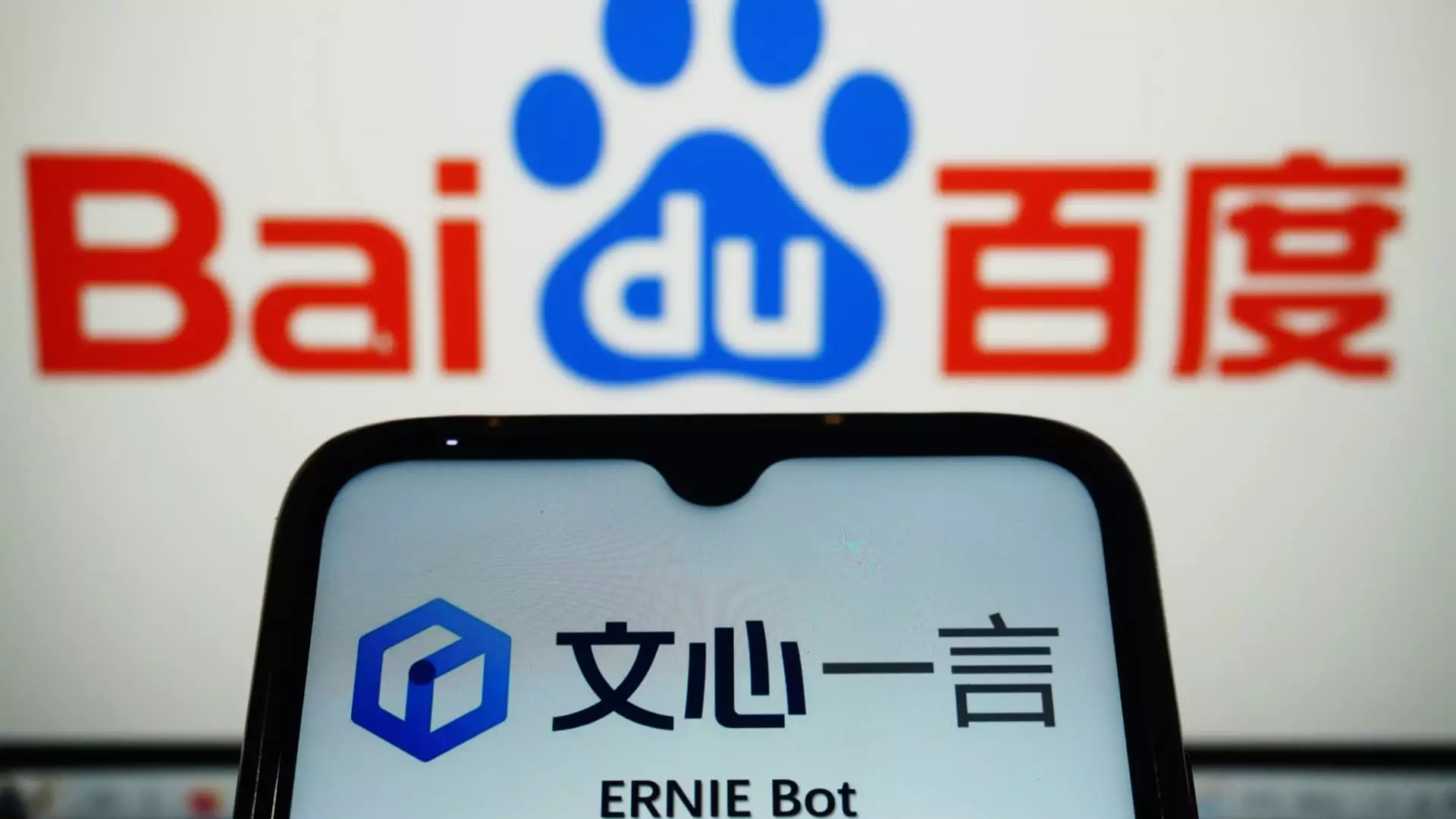In a notable shift for Baidu, the Chinese tech titan experienced a remarkable 10.7% surge in its stock prices recently, igniting conversations about the company’s potential resurgence in the hyper-competitive AI industry. This seismic shift didn’t happen in isolation; the market reacted to Baidu’s unveiling of two groundbreaking AI models over the weekend. As investors and analysts attempt to decipher the implications of these new releases, the underlying factors driving this response raise both questions and excitement.
The rapid increase in stock value hints not only at investor optimism but also signifies a “delayed reaction” as articulated by Kai Wang, a senior equity analyst at Morningstar. This view encapsulates a shared sentiment in the market regarding Baidu’s struggles in regaining its footing among the tech giants within China’s burgeoning AI landscape. Despite the hype generated by competitors like DeepSeek and others, there’s an unmistakable air of potential around Baidu’s latest endeavors that warrants a closer examination.
A Showdown of AI Titans
At the core of the excitement lies Baidu’s release of its new “Ernie” model, alongside a reasoning model designed to challenge DeepSeek’s innovative R1 model. While the specifics of how each model performs relative to the other remain shrouded in ambiguity, the implications are significant. A reasoning model, essentially a sophisticated language processing tool, promises to address complex queries with sophistication akin to human thought processes. Yet, the veracity of Baidu’s claims regarding performance parity with DeepSeek’s offering remains unverified by credible third-party assessments, leaving the tech community questioning which of these models will ultimately prevail.
What’s crucial here is that Baidu is not just competing against DeepSeek, but a slew of other tech behemoths, including Alibaba and Bytedance, which have also made notable strides in the AI arena. The stakes are high, and Baidu’s ability to genuinely deliver on performance promises is what will ultimately determine its future in this crowded field. Such scenarios underscore a larger narrative around the volatility and fluidity of pricing in AI, especially within the Chinese market—a landscape where first-move advantage and technological prowess can shift dramatically.
Open Source as a Strategic Pivot
Baidu’s strategic pivot towards open-sourcing its AI models marks a fascinating departure from its previous focus on proprietary technology. This move is not simply a trend but a calculated strategy meant to reclaim its standing in the AI hierarchy. By making these models open-source, Baidu aims to become a cornerstone of the AI dialogue, bolstering its influence while simultaneously enabling the tech community to explore its innovations without barriers.
The democratization of technology has become increasingly vital in today’s business climate, where collaboration and community-driven development often yield more rapid advancements. This shift could very well elevate Baidu from being perceived merely as a participant to a potential leader in shaping the future landscape of AI technologies. Such a transformation not only enriches the company’s relevance but could also place it on a higher pedestal compared to its more closed competitors.
Navigating Market Dynamics and Investor Sentiment
Investors are keenly aware that Baidu’s resurgence in the AI space is contingent upon its ability to translate technological innovation into tangible market performance. The dynamic nature of AI pricing further complicates matters, as the market remains sensitive to the cost-effectiveness of solutions being provided. With claims of delivering competitive capabilities at a lower cost than DeepSeek, Baidu’s edge may shine through, provided its models indeed live up to expectations.
It’s important to note that the enthusiasm for Baidu diverges from a blind optimism. Industry analysts remain hesitant, emphasizing that Baidu’s long-term viability hinges not just on the current models, but also on its readiness to adapt within a rapidly evolving technological landscape. As several companies vie for supremacy, Baidu’s next moves will need to demonstrate both innovation and agility to sustain investor confidence and competitive positioning.
In the grand scheme, the closely watched battle between Baidu and its competitors encapsulates a broader narrative of resilience and ambition that defines the current state of the tech ecosystem. As the dust settles from the latest announcements, all eyes will be on whether Baidu can indeed be viewed as a revitalizing force in an increasingly critical and fiercely competitive market.

